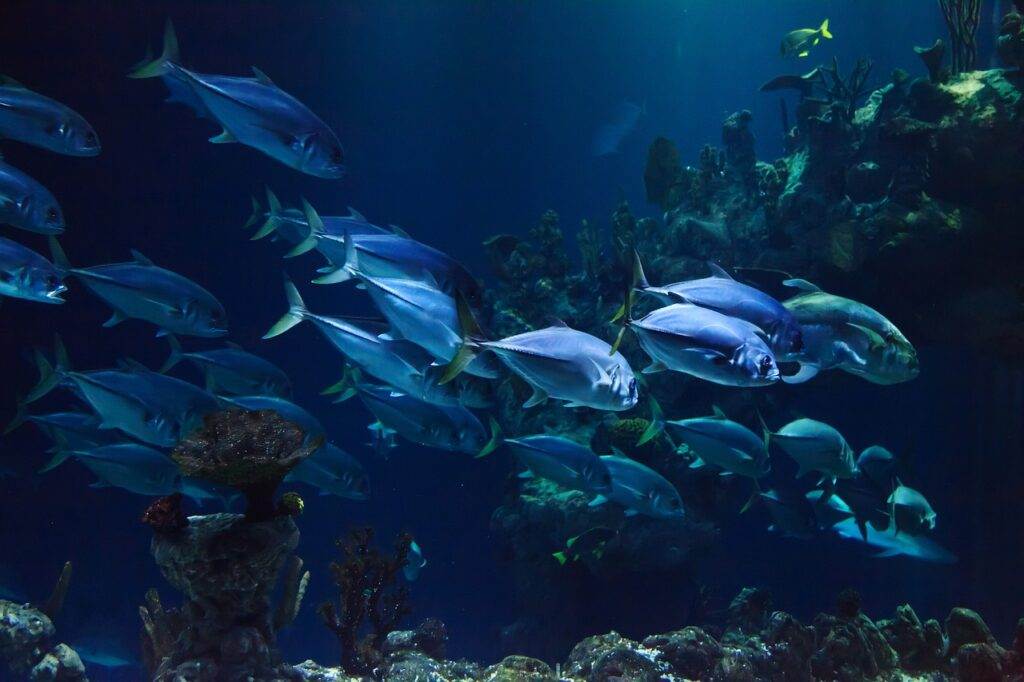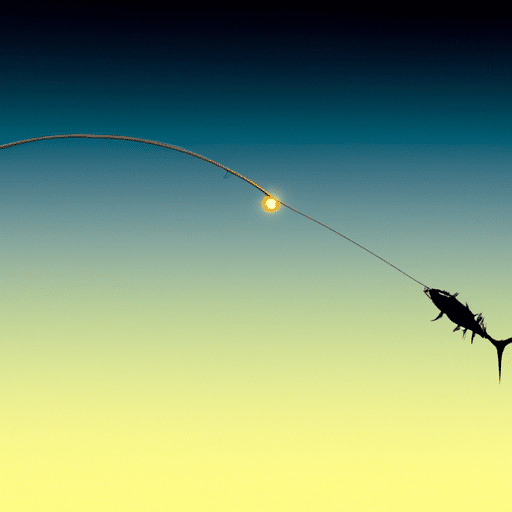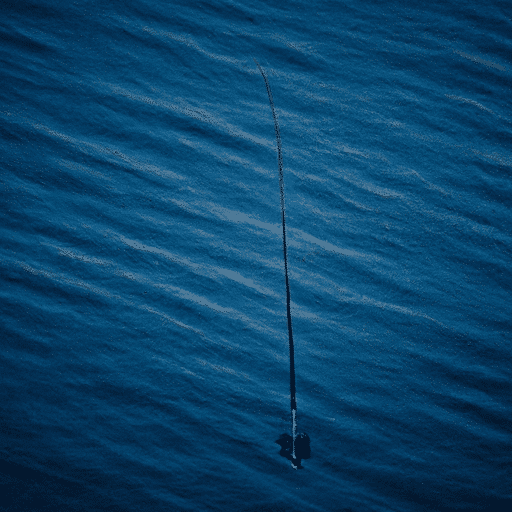Are you an avid angler looking to broaden your horizons and venture into the world of deep-sea fishing? Look no further than “Can You Go Fishing in Deep Water: Tips and Techniques for Deep-Sea Anglers.” This comprehensive guide is specifically tailored to help you navigate the challenges and mysteries of fishing in deep water. From gear selection and bait choices to understanding tides and currents, this book will equip you with the knowledge and strategies necessary to embark on a successful deep-sea fishing journey. Get ready to take your fishing skills to new depths with “Can You Go Fishing in Deep Water: Tips and Techniques for Deep-Sea Anglers.”

Understanding Deep-Sea Fishing
Definition of Deep-Sea Fishing
Deep-sea fishing refers to the act of fishing in the deeper parts of the ocean, typically beyond the reach of traditional recreational fishing grounds. This form of fishing involves targeting species that reside in the deep waters, such as marlin, tuna, swordfish, and various types of grouper. Deep-sea fishing is often done from specialized boats equipped with the necessary gear to handle the challenges posed by the open ocean.
Challenges of Deep-Sea Fishing
Deep-sea fishing presents a unique set of challenges compared to traditional freshwater or shallow water fishing. One of the main challenges is the physical demands that come with being on a boat for extended periods of time. The constant rocking and rolling of the boat can cause seasickness, which can make the fishing experience quite unpleasant. Additionally, the deep waters can be unpredictable and subject to harsh weather conditions, making navigation and fishing more challenging. The large and powerful fish found in deep-sea waters also require specialized equipment and techniques to successfully catch.
Benefits of Deep-Sea Fishing
Despite the challenges, deep-sea fishing offers a range of benefits that make it a thrilling and rewarding experience. The opportunity to catch large and powerful fish species that are not typically found in shallower waters is one of the main draws of deep-sea fishing. The adrenaline rush that comes with battling with a marlin or reeling in a massive tuna is unmatched. Furthermore, deep-sea fishing allows anglers to explore vast oceanic areas and witness breathtaking views of the open water. It also provides an escape from the hustle and bustle of everyday life, offering a peaceful and serene environment.
Preparing for Deep-Sea Fishing
Researching the Fishing Location
Before embarking on a deep-sea fishing trip, it is essential to research the fishing location to ensure a successful and enjoyable experience. Look for information regarding the types of fish that are commonly caught in the area, the best time of year to fish, and any specific regulations or restrictions that may apply. Understanding the fishing location will help you tailor your equipment, techniques, and bait choices to maximize your chances of a successful catch.
Checking Weather and Sea Conditions
Deep-sea fishing can be highly dependent on weather and sea conditions, as they can significantly impact the safety and success of your trip. Keep a close eye on the weather forecast and sea conditions leading up to your fishing excursion. Strong winds, rough seas, or inclement weather can make it dangerous to venture out into the open water. Stay informed and consider rescheduling your trip if conditions are unfavorable.
Gathering the Necessary Equipment
When preparing for a deep-sea fishing trip, it is crucial to gather all the necessary equipment to ensure a smooth and productive experience. This includes fishing rods and reels that are suitable for deep-sea fishing, as well as a variety of hooks, lures, and lines that can handle the weight and strength of the targeted deep-sea species. It is also wise to bring a complete set of tools, such as pliers, cutters, and a fish gripper, to aid in handling and releasing fish.
Securing Required Licenses and Permits
Before heading out to sea, it is imperative to secure the required licenses and permits for deep-sea fishing. Many jurisdictions have specific regulations in place to protect fish populations and ensure sustainable fishing practices. Failure to obtain the necessary licenses and permits can result in fines and penalties. Check with the local fishing authorities or visit their websites to determine the specific requirements for the area you plan to fish in.

Choosing the Right Boat
Size and Stability of the Boat
When it comes to deep-sea fishing, choosing the right boat is essential for a safe and comfortable experience. The size and stability of the boat are crucial factors to consider. Deep-sea fishing often takes place in open waters, where the conditions can be rough. Opt for a boat that is sturdy and well-maintained, with a hull that offers stability in turbulent seas.
Safety and Emergency Equipment
Safety should be a top priority when selecting a boat for deep-sea fishing. Ensure that the boat is equipped with all the necessary safety and emergency equipment, such as life jackets, fire extinguishers, flares, and a properly functioning radio or communication system. It is also advisable to choose a boat that has a reliable navigation system and onboard GPS to help navigate the vast ocean.
Comfort and Amenities
Deep-sea fishing trips can span several hours or even days, so it is important to choose a boat that offers comfort and amenities to make the experience enjoyable. Look for boats with comfortable seating, ample shade, and restroom facilities. A well-equipped galley or kitchen area can also provide the convenience of preparing meals and snacks during the trip.
Experienced Captain and Crew
Having an experienced captain and crew is crucial for a successful deep-sea fishing trip. Look for boats that are operated by knowledgeable captains who are familiar with the fishing grounds and skilled in deep-sea fishing techniques. An experienced crew can assist with baiting hooks, untangling lines, and providing guidance and advice to ensure a fruitful fishing experience.
Selecting Fishing Tackle and Gear
Rod and Reel Considerations
In deep-sea fishing, selecting the right rod and reel can greatly impact your chances of success. Look for sturdy and durable rods and reels that can handle the weight and strength of deep-sea species. Consider the type of fish you are targeting and choose a rod and reel combination that matches their size and fighting abilities.
Line Strength and Type
The type and strength of fishing line are critical when deep-sea fishing. The deep waters often house powerful and elusive fish that can put tremendous strain on the line during the fight. Use a high-quality line with sufficient strength to withstand the force of a large fish. Braided lines are popular choices for deep-sea fishing due to their strength and low stretch properties.
Choosing the Right Hooks and Lures
Selecting the right hooks and lures is essential for enticing deep-sea fish to bite. Choose hooks that are suitable for the size and type of fish you are targeting. Circle hooks are often used in deep-sea fishing as they are designed to minimize injury to the fish and increase the chances of a successful hookset. As for lures, consider using brightly-colored or reflective lures that mimic the natural prey of deep-sea species.
Additional Equipment and Accessories
In addition to the basic tackle, there are several additional pieces of equipment and accessories that can enhance your deep-sea fishing experience. Consider bringing a fishing belt or harness to provide extra support during the fight with a powerful fish. A gaff or landing net will be useful for safely bringing the fish aboard the boat. It is also recommended to have a tackle box stocked with spare hooks, lures, and other small items that may be needed on the trip.

Mastering Deep-Sea Fishing Techniques
Bottom Fishing
Bottom fishing is a popular technique used in deep-sea fishing to target species that inhabit the ocean floor or structures such as reefs and wrecks. This technique involves dropping your baited hook to the bottom and waiting for the fish to take the bait. Bottom fishing can be done using various rigs, such as the Carolina rig or the dropper loop rig. It is important to keep the line taut and be attentive to any bites or movements indicating a fish has taken the bait.
Trolling
Trolling is another effective technique for deep-sea fishing, especially when targeting fast-swimming fish like tuna or marlin. This involves dragging lures or baited lines behind a moving boat at a specific speed to entice fish to strike. It is important to consider the depth at which the fish are feeding and adjust the length of the line accordingly. Varying the speed or changing the lure colors and designs can also help attract fish.
Jigging
Jigging is a versatile and active fishing technique commonly used in deep-sea fishing. It involves dropping a weighted lure or jig to the desired depth and then quickly jerking the rod up and down to simulate the movement of injured prey. This motion can entice predatory fish to strike. It is important to experiment with the speed and intensity of the jigging motion to find what attracts the fish in your specific fishing location.
Chumming
Chumming is a technique used to attract fish to a specific area by dispersing small pieces of bait or fish parts into the water. It can be an effective way to bring fish closer to the boat and stimulate their feeding behavior. To chum effectively, tie a chum bag or use a chum dispenser to release small amounts of chum into the water at regular intervals. This can create a feeding frenzy, attracting fish to your baited hooks.
Drift Fishing
Drift fishing involves fishing while allowing the boat to drift with the current. This technique is effective in covering a larger area and can be used in both shallow and deep waters. It is important to adjust the bait and weight to the depth at which you want to fish and to ensure that the bait stays near the bottom as the boat drifts. Drift fishing can be combined with other techniques, such as bottom fishing or trolling, to increase your chances of a successful catch.
Understanding Deep-Sea Fishing Species
Common Deep-Sea Fish Species
Deep-sea fishing offers the opportunity to target a wide range of fish species that reside in the deep waters of the ocean. Some of the common deep-sea fish species include marlin, swordfish, tuna, wahoo, mahi-mahi, grouper, snapper, and shark. These species are known for their size, strength, and fighting abilities, making them highly sought-after by deep-sea anglers.
Behavior and Feeding Habits
Understanding the behavior and feeding habits of deep-sea fish species is crucial for successful fishing. Deep-sea fish are often pelagic, meaning they spend most of their time swimming in open water rather than near the ocean floor. They are opportunistic predators that feed on smaller fish, squid, and crustaceans. Many deep-sea fish species are known to be migratory, following specific temperature gradients or currents in search of food and suitable breeding grounds.
Tips for Targeting Specific Species
Each species of deep-sea fish requires specific tactics and techniques to successfully target them. Researching the targeted species can provide valuable insights into their preferred habitat, feeding patterns, and optimal bait choices. For example, marlin are known to be attracted to large, brightly-colored lures that mimic the prey they feed on. Tuna, on the other hand, are often attracted to fast-moving lures or live bait. Tailoring your techniques and bait choices to the specific species you are targeting will greatly improve your chances of success.
Conservation and Catch-and-Release Practices
While deep-sea fishing can provide an exhilarating experience, it is important to practice responsible fishing and conservation efforts to ensure the sustainability of our oceans. Catch-and-release practices are highly encouraged, especially for threatened or protected species. When releasing a fish, handle it carefully to minimize stress and injury. Use barbless hooks to make the hook removal process easier, and release the fish in a manner that allows it to swim away strongly. Avoid keeping more fish than you need, and respect any size or bag limits imposed by fishing regulations.

Safety Precautions and Emergency Preparedness
Wearing Appropriate Safety Gear
Safety should always be a top priority when engaging in deep-sea fishing. Wearing appropriate safety gear, such as a well-fitted life jacket, is essential. A life jacket can provide buoyancy in case of an emergency or accidental falling overboard. It is also recommended to wear non-slip shoes to maintain stability on the boat and protect against injuries. Sun protection, including a wide-brimmed hat, sunglasses, and sunscreen, is crucial to safeguard against harmful UV rays.
Knowing Basic First Aid
Having a basic understanding of first aid is essential for any fishing trip, especially when venturing into the deep sea. Accidents and injuries can happen unexpectedly, and being prepared can make a significant difference in the outcome. Make sure to have a first aid kit onboard that includes bandages, antiseptic ointment, pain relievers, and any necessary medications. Familiarize yourself with basic first aid procedures, such as treating cuts, burns, and sea sickness, to ensure prompt and proper care if needed.
Understanding Sea Sickness
Sea sickness is a common concern when embarking on a deep-sea fishing trip. The constant motion of the boat can cause nausea and dizziness, leading to a less enjoyable experience. If you are prone to sea sickness, there are several precautions you can take to alleviate symptoms. Consider taking over-the-counter medications specifically designed to prevent or reduce sea sickness. Eating light, non-greasy meals before the trip and staying hydrated can also help mitigate symptoms. Positioning yourself towards the middle of the boat, where the rocking motion is less pronounced, can provide some relief as well.
Emergency Communication and Signaling
In case of an emergency while deep-sea fishing, having reliable communication and signaling devices can be a lifesaver. Ensure that the boat is equipped with a working radio or communication system to call for help if needed. Flares, whistles, and signaling mirrors are essential items to have onboard to attract attention in an emergency situation. Familiarize yourself with the operation of these devices and their proper usage.
Respecting Wildlife and the Environment
When engaging in deep-sea fishing, it is important to respect the wildlife and environment you are in. Avoid littering or disposing of any waste materials in the ocean. Marine debris can be harmful to marine life and contribute to pollution. Respect the natural habitat of the fish species you are targeting and refrain from damaging coral reefs or other fragile ecosystems. Adhere to any local regulations or guidelines regarding protected areas and restricted fishing zones to preserve the delicate balance of the marine environment.
Tips for a Successful Deep-Sea Fishing Trip
Timing and Seasonality
Timing plays a crucial role in deep-sea fishing success. Research the seasonal patterns and migration habits of the fish species you are targeting. Certain species may be more abundant during specific times of the year, depending on factors such as water temperature and food availability. Planning your deep-sea fishing trip during peak fishing seasons increases your chances of encountering larger schools of fish and experiencing more action.
Fish Finder and Navigation Systems
Investing in a fish finder and navigation system can greatly enhance your deep-sea fishing experience. A fish finder uses sonar technology to detect fish and underwater structures, allowing you to target productive fishing areas. Additionally, a reliable navigation system or GPS can help you locate fishing grounds, mark waypoints, and safely navigate back to shore, especially when fishing in unfamiliar waters. These electronic devices can provide valuable information, saving you time and increasing your chances of finding and catching fish.
Proper Bait and Presentation
Selecting the right bait and presenting it properly can make a significant difference in deep-sea fishing success. Research the preferred prey of the fish species you are targeting and choose bait that closely mimics their appearance and movement. Properly rigging and presenting the bait in a realistic manner is crucial. Ensure that the bait is securely attached to the hook and drifts naturally in the water to entice the fish to strike.
Learning from Local Experts
When planning a deep-sea fishing trip, seek advice and guidance from local experts who have intimate knowledge of the fishing grounds. Local charter captains, fishing guides, or experienced anglers can offer invaluable insights into the best spots, techniques, and bait choices for specific species. They can provide real-time updates on fishing conditions, recent catches, and any special considerations to keep in mind. Learning from the expertise of locals can greatly enhance your chances of a successful deep-sea fishing trip.
Maintaining a Positive Attitude
Deep-sea fishing can be unpredictable, and there may be days when the fish are not biting as expected. It is important to maintain a positive attitude and enjoy the entire experience, regardless of the catch. Appreciate the beauty of nature surrounding you, the camaraderie with fellow anglers, and the thrill of being out on the open water. Remember that deep-sea fishing is as much about the journey as it is about the catch.

Etiquette and Best Practices
Respecting Other Anglers
When participating in deep-sea fishing, it is important to respect fellow anglers and follow proper etiquette. Avoid casting over someone else’s line, as it can result in tangled lines and frustration. Give other anglers enough space and avoid crowding their fishing spot. Be mindful of your fishing gear and ensure it does not pose a safety hazard to others. Remember, everyone is there to enjoy the experience, so maintaining a respectful and considerate attitude towards fellow anglers is essential.
Proper Handling and Release of Fish
Deep-sea fishing often involves catch-and-release practices to promote sustainable fishing. When handling a fish that you plan to release, do so with care to minimize stress and injury. Wet your hands before handling the fish to protect their delicate scales and skin. Support the fish properly and avoid squeezing or mishandling it. When releasing the fish, gently place it back into the water and allow it to swim away under its own power. These practices promote fish survival and ensure their continued presence for future generations.
Maintaining Cleanliness on the Boat
Keeping the boat clean and organized is not only a matter of hygiene but also a safety consideration. A clutter-free deck reduces the risk of tripping or accidents while moving around. Dispose of any waste materials properly and do not leave behind any litter. Keep fishing gear, tackle boxes, and personal belongings in designated areas to minimize the risk of them getting damaged or lost. By maintaining cleanliness and organization, you create a safer and more enjoyable deep-sea fishing environment for everyone onboard.
Following Fishing Regulations
Responsible deep-sea anglers follow fishing regulations and adhere to catch limits and size restrictions imposed by local authorities. Familiarize yourself with the specific fishing regulations in the area you plan to fish in. Pay attention to any seasonal closures, protected areas, or restricted fishing zones to avoid legal repercussions and contribute to the conservation efforts in place. By respecting fishing regulations, you are playing your part in preserving fish populations and ensuring their abundance for future generations.
Post-Fishing Care and Enjoyment
Cleaning and Storing Equipment
After a deep-sea fishing trip, it is important to clean and store your equipment properly to maintain its longevity and performance. Rinse your fishing rods and reels with fresh water to remove any salt or debris. Dry them thoroughly before storing to prevent corrosion. Clean and disinfect any fishing accessories or tools used during the trip. Store your fishing gear in a cool and dry place to prevent damage from humidity or extreme temperatures.
Processing and Preserving the Catch
If you decide to keep some of your catch, proper processing and preservation ensure that it remains fresh and delicious. Immediately after catching, bleed the fish by cutting the gills to remove any blood and enzymes that can affect the meat’s flavor. Gut the fish and keep it chilled on ice or in a cooler filled with ice to maintain its freshness. Once back onshore, clean the fish thoroughly and fillet them if desired. Vacuum-seal or wrap the fillets tightly in plastic wrap and freeze them for long-term storage.
Cooking and Enjoying Deep-Sea Delicacies
Cooking and enjoying the fruits of your deep-sea fishing trip is a highly satisfying experience. Deep-sea fish are known for their exquisite flavor and versatility in the kitchen. Explore different recipes and cooking techniques to bring out the best in each fish species. From grilling or baking to pan-searing or ceviche, the possibilities are endless. Share your culinary creations with family and friends, and savor the taste of your deep-sea delicates while reminiscing about the thrill of the catch.
Sharing Fishing Experiences and Memories
One of the most enjoyable aspects of deep-sea fishing is sharing your experiences and memories with others. Whether it’s through storytelling, photographs, or videos, reliving the excitement of the trip can create lasting memories. Share your fishing tales with fellow anglers, friends, or family members who appreciate the joy and adventure that comes with deep-sea fishing. You may inspire others to embark on their own deep-sea fishing expedition or create opportunities to bond over a shared love for the sport.
Deep-sea fishing offers a thrilling and rewarding experience for anglers of all levels of expertise. By understanding the definition, challenges, and benefits of deep-sea fishing, and by adequately preparing with research, equipment, and safety precautions, you can increase your chances of a successful and enjoyable deep-sea fishing trip. Mastering the various techniques, understanding deep-sea fish species, and following responsible fishing practices will further enhance your deep-sea fishing skills. Remember to respect the environment and wildlife, maintain etiquette and cleanliness onboard, and comply with fishing regulations. Lastly, take pride in your catch, savor the flavors of the deep-sea delicacies, and share your fishing experiences and memories with others. Happy deep-sea fishing!





